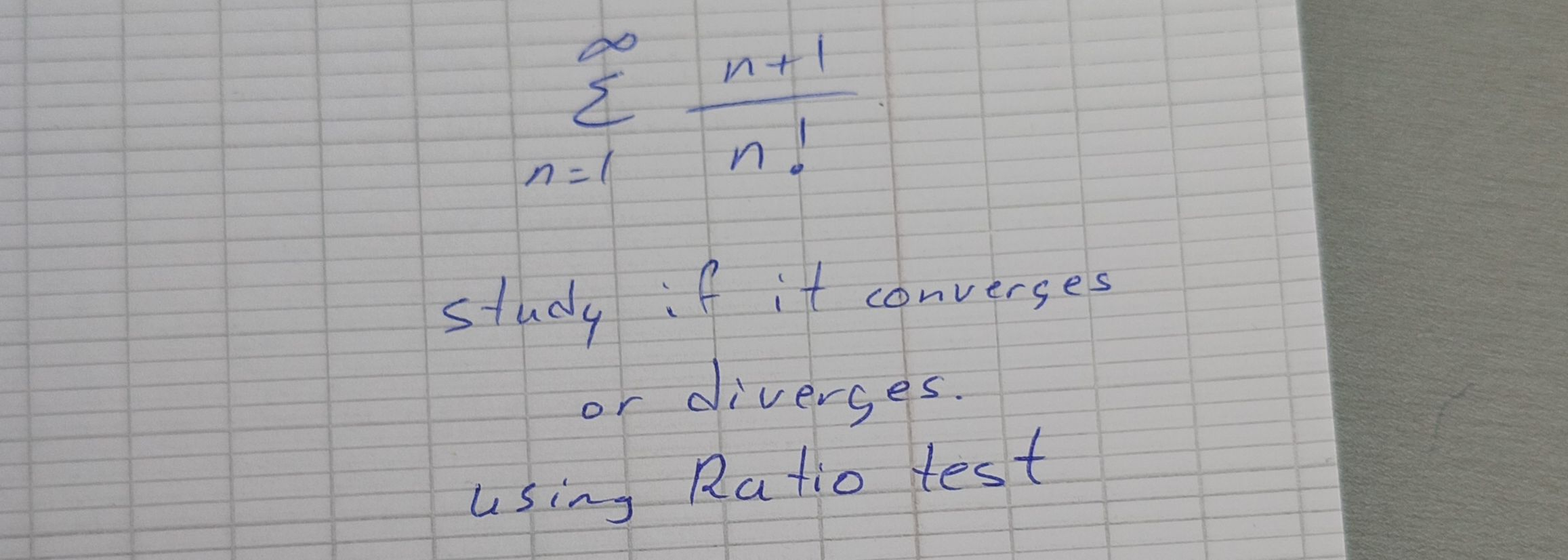Full solution
Q. Study if it converges or diverges using Ratio test.
- Write general term: Write down the general term of the series.
- Apply Ratio Test: Apply the Ratio Test to determine convergence or divergence.We need to find the limit of as approaches infinity.
- Calculate : Calculate .
- Set up ratio: Set up the ratio .\left|\frac{a_{n+\(1\)}}{a_n}\right| = \left|\frac{\frac{n+\(2\)}{(n+\(1\))!}}{\frac{n+\(1\)}{n!}}\right|
- Simplify the ratio: Simplify the ratio.\(\newline
- Take limit: Take the limit of the ratio as approaches infinity.
- Evaluate limit: Evaluate the limit.
- Limit is : The limit is because as gets larger, approaches .
- Ratio Test conclusion: Since the limit is less than , the Ratio Test tells us the series converges.
More problems from Negative Exponents
QuestionGet tutor help

